How to Get Rid of Water Spots on Car Windows
A freshly washed automobile is a glorious sight to behold, even without a protective layer of ceramic coating sprawled across its glimmering exterior. Regardless as to whether you hand wash and polish your ride by hand, take it to a professional detailer, or merely hit the touchless car wash down the street, a quick scrub and rinse goes a long way aesthetically.
But there are some side-effects to washing a vehicle, one of them being unsightly water spots. These residue-rich spots are not only unattractive, they can also do permanent damage if not attended to in a timely fashion. From a car's paintwork and plastic trim, to its windows and windshield, hard water and contaminants show little preference for the surfaces they adhere to. Since the windshield is arguably the most crucial piece of glass within a vehicle, and should never be obfuscated in any way, it is of the utmost importance that heavy concentrations of water spots are always removed from its surface.
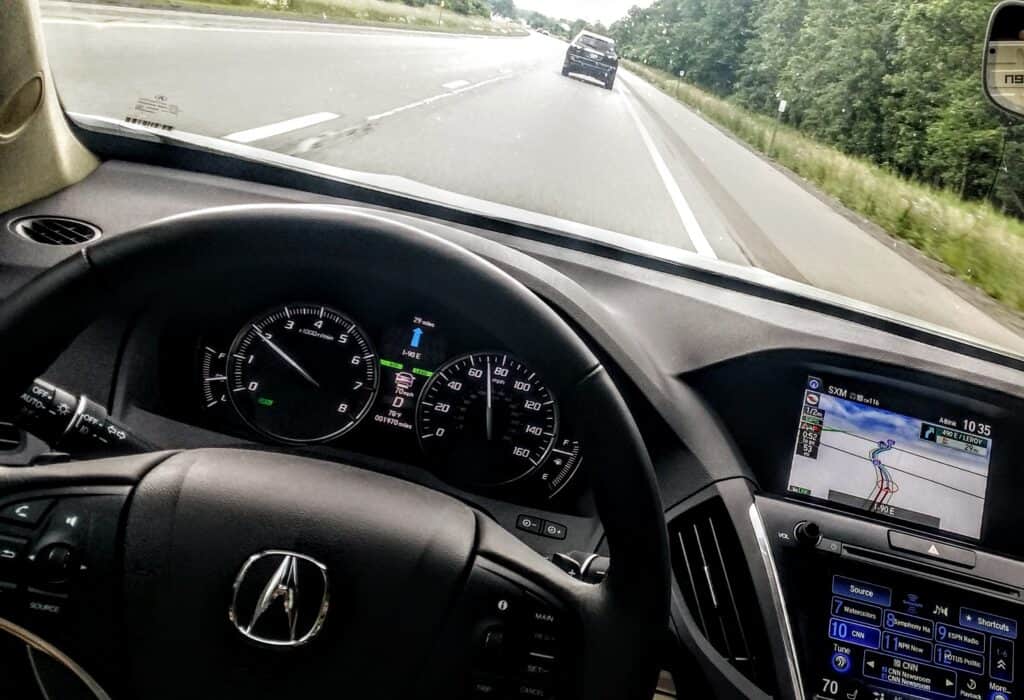
Even with a protective layer of ceramic coating applied to a windshield (yes, you can apply Armor Shield IX to car glass), water deposits will still materialize in small amounts, regardless of what sort of hydrophobic material you are using to shield our vehicle.
So what causes these pesky water spots to form, and is there any way to prevent them from materializing in the first place? Are there any proven remedies for removing hard water once it has dried on a sheet of glass? Are there any natural alternatives to using chemicals on hard water spots? Today we'll be answering all of these questions, and offer a few quick tips for those of you looking to take matters into your own hands.
Types of Water Stains That Occur on Windshields
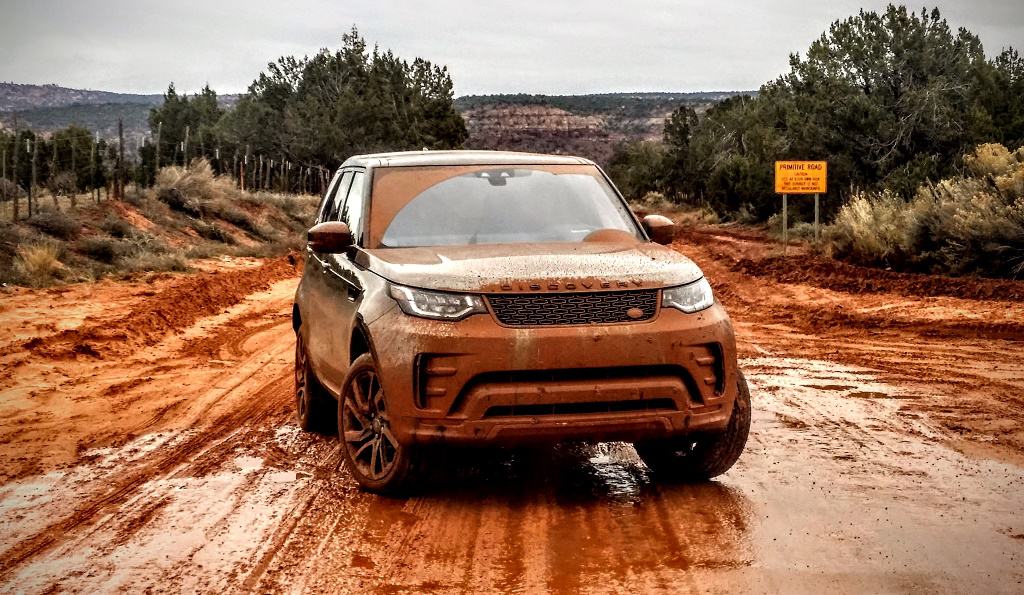
There are a multitude of contaminants that can cause stubborn stains to form on a glass surface, and hard water isn't the only perpetrator. A spritz of windshield washer fluid may remove the tree sap from a windscreen, but those windshield wiper blades tend to cause water stain streaks to form. Acid rain, bird droppings, road salt, dust, and exhaust soot can all cause a water spot to form once mixed with a little H20. Hell, even the washer fluid over-spray from the vehicle in front of you can cause a car's windshield to develop stubborn stains.
Sure, you can try and apply a trusted glass sealant to the windscreen, but chances are you will still need to breakout the glass cleaner or denatured alcohol once you reach your destination. Throwing a little elbow grease at the issue can also cause problems, because while a complete car wash sounds like it is the best way to solve this problem, the water you spray may be causing even more water spots to form.
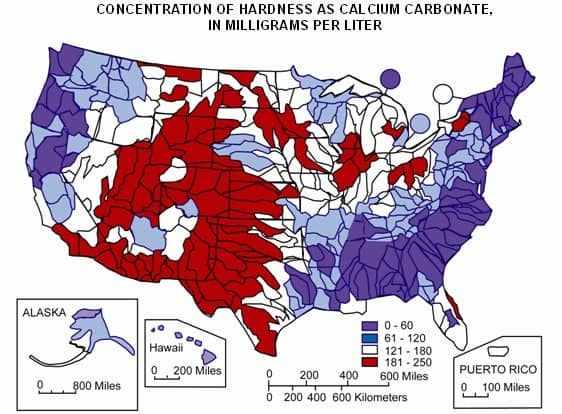
According to the United States Geological Survey (USGS), "Hard water is high in dissolved minerals, largely calcium and magnesium." While there are quite a few other naturally occurring substances that can cause hard water and limescale to form, it is water's ability to quickly dissolve calcium and magnesium that make these two minerals the most common culprits. Naturally, water hardness varies depending upon your location, so someone living in Maine is going to have far softer water than say someone living in Colorado.
By now you may be wondering why these minerals only materialize after water has dried, and remain undetectable when water is rolling off your car's windscreen. The reason for this phenomena is simple.
When hard water is heated, solid deposits of calcium carbonate form what is commonly referred to as a "scale." This white residue may only form a fine layer on a piece of glass, but it also has the ability to build-up layer upon layer if not removed, much like a ring of soap scum in a bathtub. And while using a highly-rated car wash foam may remove the hard water spots left behind from a recent wash or yesterday's rain storm, these pesky mineral stains will surely resurface when it comes time to rinse.
Importance of Removing Water Stains From Your Windshield
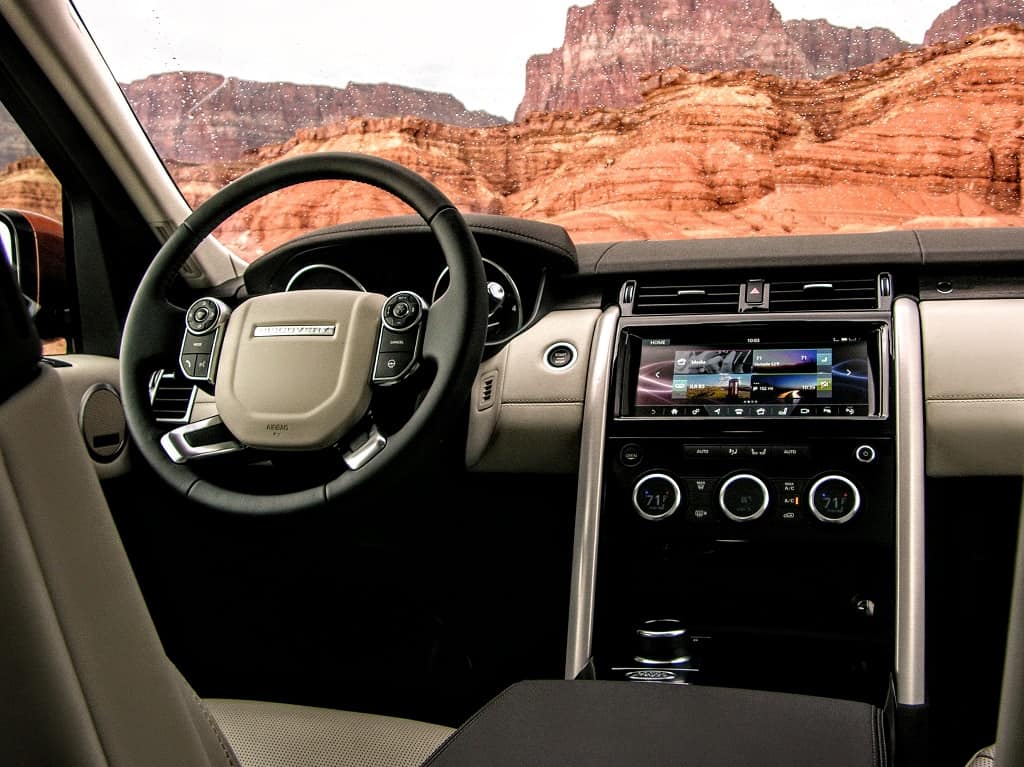
So now that we have determined that naturally occurring sediments in water are often the primary culprit when a bonded mineral water spot materializes on glass, we turn toward an unexpected secondary offender: car wash soap. For all of its polishing and protecting properties, that high-dollar car wash shampoo could be causing unsightly water spots to form on your windshield glass. If not rinsed-away in a timely fashion, the soapy residue left behind after a shampoo scrub quickly goes from helpful to hurtful, so pay close attention to the following…
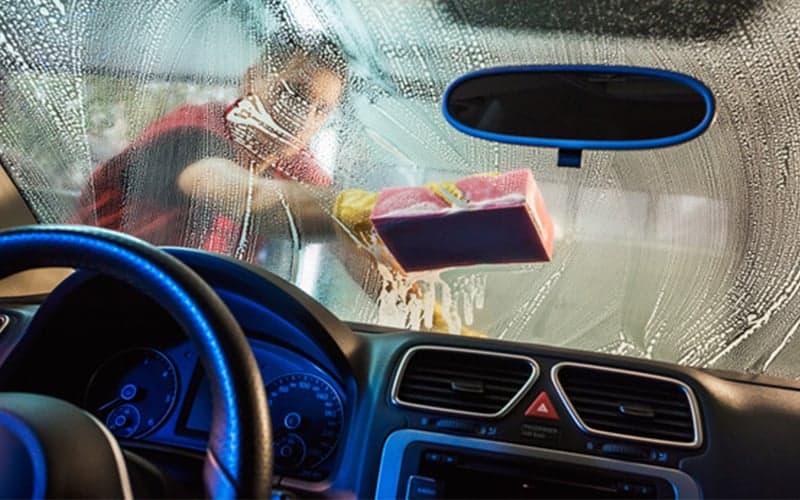
Always use a two-bucket cleaning method to avoid cross-contamination between your clean sudsy water and dirty rinse water, and keep your car's surface wet at all times. Scrub time complete, all soap residue has been rinsed away, immediately start towel drying the vehicle to prevent pooled water from forming mineral-infused hard water spots. In order to reduce evaporation times, avoid direct sunlight, and always start with the roof of the vehicle to avoid filthy trickle-down cross-contamination issues. If a carport or ample tree coverage is not readily available, time your washes so that they can be completed on an overcast day, or when the sun is low in the horizon.
Regrettably, even when adhering to proper car wash etiquette, hard water stains will still try and form in certain areas. Being that there is little that can be done to prevent every little calcium deposit from materializing, some aftercare is required once bath time is over. While a quick polish with a fresh microfiber cloth may do the trick in certain circumstances, the use of a trusted glass cleaner is often the next best bet. If that doesn't work, consider utilizing one of the following cleaning products to remove the more stubborn stains.
Cleaning Products for Removing Water Stains From a Windshield
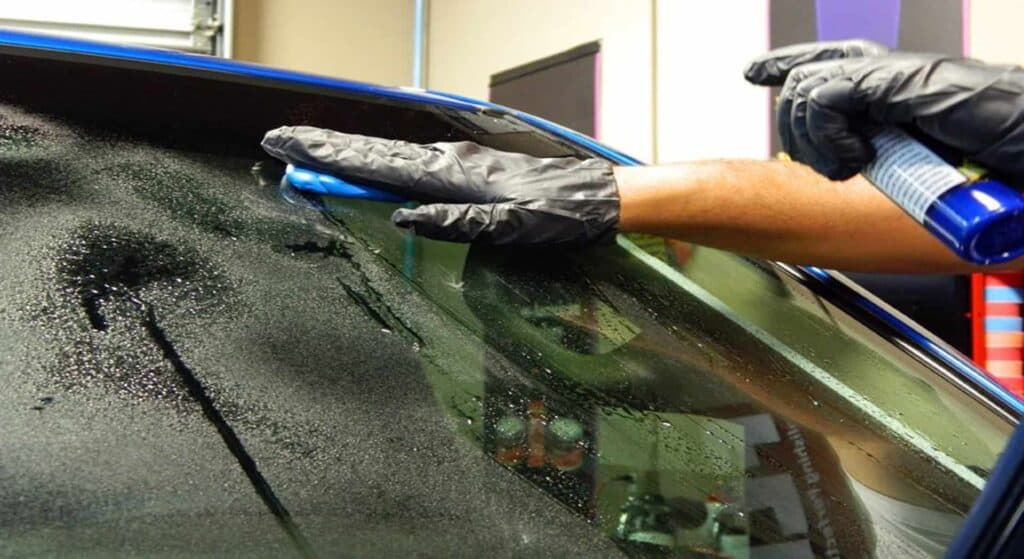
Being that most of us don't have the ability to break-out the good old glass cleaner every time water hits our car's windshield, other preventative measures must be put into play. While properly washing and drying a vehicle should always be the first line of defense against a basic hard water stain, there are a few products that do an outstanding job of removing mineral-rich residues. The following household cleaning products not only remove stubborn hard water stains on window glass, they also have the ability to lift dried tree sap, as well as bugs and tar. Just remember to always wear protection when handling these chemicals to prevent skin and eye damage.
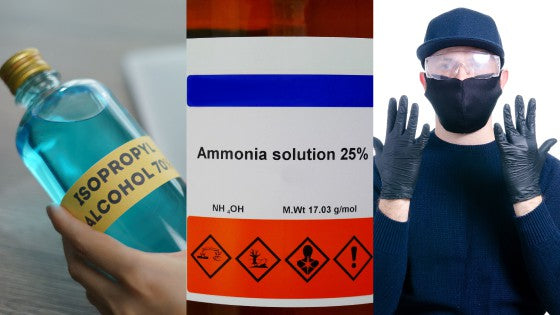
- Isopropyl Alcohol (IPA): No, we're not talking about pouring that kind of IPA on your car. We're suggesting that you put a splash of Isopropyl Alcohol on a microfiber cloth prior to giving your car's windshield a wipe-down. When used immediately after a wash and dry, rubbing alcohol will lift most of the milder water spots without issue. Just be sure to wear gloves and eye protection, and always keep IPA away from open sources of heat, as it is extremely flammable.
- Ammonia: Combine two quarts of distilled water with two tablespoons of ammonia and pour into a spray bottle. Spray the mixture onto the hard water spot on the glass, allowing it to sit for up to five minutes before wiping the surface down with a dry microfiber cloth. Being that ammonia can be irritating to the eyes and skin, it is always best to wear rubber or nitrile gloves, as well as some form of eye protection when handling this cleaning product.
Combating the Effects of Acid Rain
How to Remove Acid Rain and Water Spots or Repair Damaged Glass From Your Car Windows.
Being that it is impossible to dodge precipitation whilst driving, the negative effects that acid rain causes can be quite frustrating. According to the EPA, the majority of the damage inflicted upon cars by acid rain stems from the liquid being allowed to evaporate. Mixed with direct sunlight and allowed to harden on a surface for a prolonged period of time, acid rain will start to corrode clear coat and paint, and in certain circumstances, permanently etch glass. The best way to combat acid rain is by properly washing your vehicle, using the cleaning supplies and methods listed in this article, and following a strict car wash regiment. If all else fails, and your windshield seems to be permanently coated in stubborn acid rain water spots, try applying a coat of GlasWeld ProClean Water Spot Remover. While it may seem a tad pricey, reviews of this product are outstanding, and it comes with its own glass-specific applicator pad.
Natural and Homemade Methods for Removing Water Stains From a Windshield
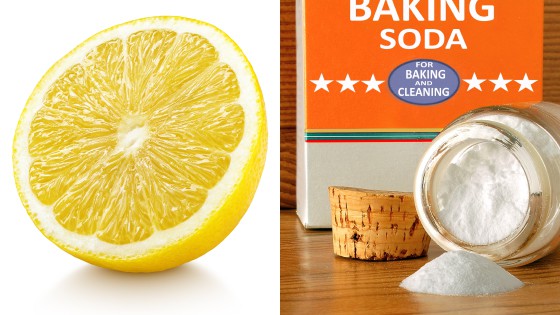
Curious to see if there are any kitchen supplies that can be used to remove water stains from your car windshield? Well you're in luck, because we have three stellar options for you to choose from, all of which are readily available and inexpensive.
- Lemon Juice: Lemon juice's natural acidity gives it the edge it needs in the fight against stubborn water spots. Simply mix the juice of three lemons with a cup of distilled water in a spray bottle and apply to the car's windshield or water spot covered window glass. Allow the acidic lemon juice mixture to rest on the glass for a few minutes before wiping it away with a clean cloth. Repeat as necessary, doing one section at a time to avoid creating your own water spots.
- Baking Soda: This magical powder is one of those versatile cleaning agents that has the ability to double as an odor removing, scum scouring sensation. To use baking powder on your car's windshield, blend half of a cup of baking soda with just enough water that it begins to form a thick paste. Apply the paste with a soft microfiber cloth, allowing the compound to dry out just a bit before wiping or blowing it away. A quick polish with a fresh microfiber cloth is all that is needed to finish the task at hand.
Quick Tip: A leaf blower or an air compressor make the removal of dried baking soda paste super easy. Once blown from the vehicle, the baking soda can be easily washed away or swept-up.
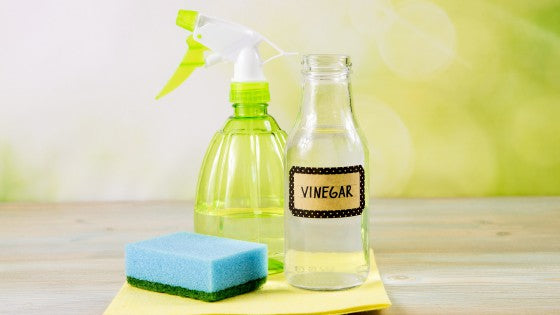
- White Distilled Vinegar: A 50/50 blend of distilled white vinegar and water is a crowd favorite, both in regard to its cleaning and odor removing capabilities, as well as its water spot removal strengths. Read on to see why we recommend going this route first when removing water marks from car glass. It may sound strange, but stripping a windshield of water spots with white vinegar is a fantastic starting point.
What other household products can you use for removing water stains from your windshield or car glass?
- It may not be all natural, but the rust removing, water dispersing, degreasing super lubricant known as WD-40, is one of the greatest water spot removal tools of all time. Simply spray the liquid onto the affected area, let it sit for a few seconds, and then wipe your windshield down with a clean microfiber cloth. According to the brand's website, WD-40's formula will safely remove most stubborn residues, leaving car glass and mirrors alike "…sparkling clean and as good as new… by reacting with the minerals in water and loosening up their bonds."
Removing Water Marks With Vinegar and Water
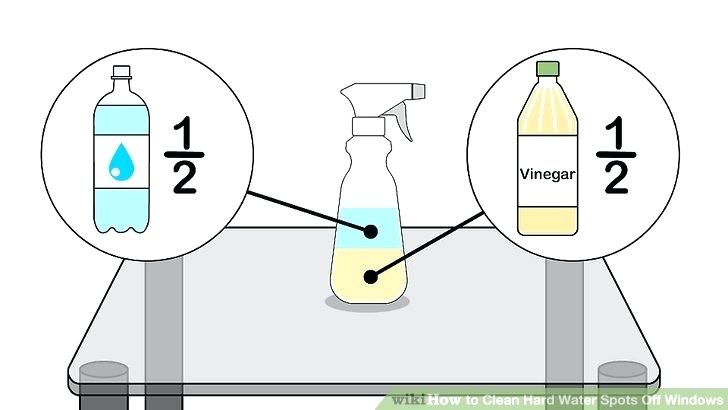
Figuring out what works best for removing mineral deposits is kind of like learning how to de-ice your car. It takes research, practice, and a little creativity. Ever hear of someone pouring vinegar into their coffee pot to clean it out? While it may sound weird, this household cleaning trick actually works, and not just on kitchen appliances. Vinegar's high acidity levels give it the ability to dissolve mineral particles quickly, making a homemade vinegar solution an indispensable cleaning product, and a champion windshield water spot removal tool.
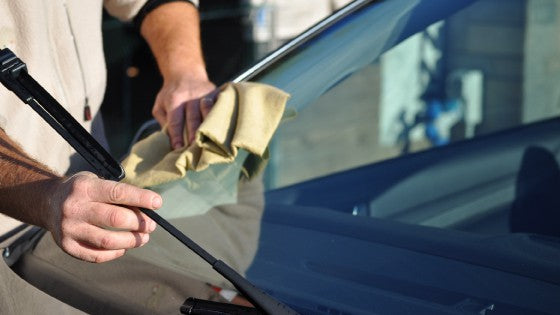
Step 1:
Pour a 50/50 water and vinegar blend into a plastic spray bottle.
Step 2:
Spray the water spot laden areas of the windshield with the solution, using a microfiber towel to agitate the surface. This will loosen most of the mineral deposits found within water spots and help facilitate their removal.
Step 3:
Buff the area dry using a clean microfiber cloth.
Step 4:
If stubborn mineral deposits remain, repeat Steps 2 and 3 until all water spots are removed.
If you enjoyed this article, then you'll love AvalonKing's automotive care products for Do-It-Yourselfers. We create "No B.S. products" for an affordable price. And the best part, we treat our customers like family, so if you have any questions or just looking to chat about cars, we're only an email or call away. Check out our homepage here.
How to Get Rid of Water Spots on Car Windows
Source: https://avalonking.com/blog/how-to-get-water-spots-off-your-windshield/